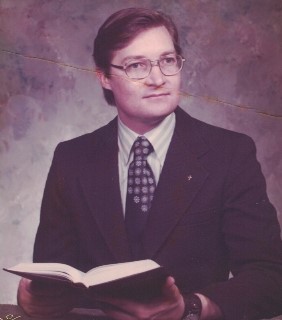The “misfit artist” works with recyclables to create art
Published 10:00 pm Friday, February 24, 2017

Local artist David Edgar creates artwork out of post-consumer recyclables he finds in recycling bins. Edgar says making this art “energizes his creative spirit.” Edgar received an award for Best Original Artwork at the recent Tryon Arts and Crafts School’s 2017 Artist of the Year Show. (Photo by Michael O’Hearn)
Walk into the basement studio of David Edgar’s house and you might find yourself wondering about the bottles hanging on a coat rack in the corner of the room and the shards of plastic on his desk.
The studio’s walls are filled with art, fish made out of plastic to be exact, created by Edgar from post-consumer recyclables. Edgar is retired and he and his wife Robin live outside Tryon.
Edgar was born in Ft. Hood, Texas and raised in Gainesville, Fla. and spent more than 30 years in the steel fabrication industry before moving on to creating art. Edgar said he knew he wanted to be an artist by the fourth and fifth grade.
Trending
“As a sculptor, my work has always been strongly informed by the 20th century tradition of found object assembly,” Edgar’s artist statement declares. “Perhaps, in the context of a mid-life catharsis, I recently interrupted over 25 years of working in steel, and began making decorative artworks from recyclable detergent bottles. With quality of craft as an important issue for me, I find that making recycled plastic art truly energizes my creative spirit.”
The fish Edgar creates are part of the “Plastiquarium,” a term Edgar said his wife Robin coined by merging the words “plastic” and “aquarium.” The Edgars are co-authors of the 2009 book “Fantastic Recycled Plastic,” published by Lark Books, which details 30 art projects made out of recyclables and instructions on how to create them.
“Considering the development of this new artwork, I realize that there are a number of recognizable influences that place the work into the context of the larger continuum,” Edgar’s website said. “The Plastiquarium certainly fits within the genre of collage and found-object assembly. The American Pop Art movement, particularly the work of Andy Warhol, validates the use of commercial packaging images as symbolic elements characterizing our producer and consumer society.”
Edgar holds a master’s degree in sculpture from the Cranbrook Academy of Art in Bloomfield Hills, Mich. in addition to a bachelor’s degree in intermedia, sculpture and printmaking from the Minneapolis College of Art & Design. He was also an art professor at Ashland University in Ashland, Ohio and the University of North Carolina Charlotte.
After being inspired by the recyclables thrown out by his Charlotte, N.C. neighbors, Edgar’s artist career transformed from working with steel to working with recyclables. He decided to create something for when the Carolina Panthers faced off against the New England Patriots during the Super Bowl in 2004.
“The Carolina Panthers were playing the New England Patriots in the Super Bowl and we were invited to a cookout Super Bowl party in the neighborhood,” Edgar said. “I wanted to show team spirit and solidarity with our new community. I had this plastic bottle that was colored blue like the Panthers uniform and I used it with a rotisserie chicken tray, and I made a Panthers mascot mask because we were in Charlotte and they were the home team. The Panthers did not win that year but it was where it started. It was a break away from doing welded stuff into plastic stuff.”
Trending
An exhibition in Brockton, Mass. put out a call to artists and Edgar said he sent some photographs of his early work to Lloyd Herman, the founding director of the Renwick Gallery in the Smithsonian Museum. Edgar said Herman liked his work and asked for two more designs to be utilized as an installation with seven pieces in the exhibition. Today, Edgar’s work is seen in more than 50 galleries both nationally and abroad.
“When I was in school, becoming an internationally known artist seemed like just a dream,” Edgar explained. “But, with the advent of the Internet, my work is seen everywhere online. What inspires me is the more I get into working with post-consumer recyclables, the more I become sensitive to environmental issues and their connectedness to this world. My art is not like a lot of post-modernist art where there’s a lot of angst and anxiety in it. I wanted to make work that makes people happy, that is upbeat and positive, but with the message that we are turning our environment into a wasteland full of this stuff.”
Edgar has also worked as an imagineer with the Imagineering Division of Walt Disney World doing photo documentation during the construction of Disneyland in Tokyo, in addition to working on the EPCOT Center in Orlando, Fla. He was also the executive director of the Armory Art Center in West Palm Beach, Fla. for 12 years.
Edgar received an award for Best Original Artwork at the recent Tryon Arts and Crafts School’s 2017 Artist of the Year Show. His Hammer-Nosed Tide Feeder tied with Jim Weitzel for his Dare to Soar sculpture.
For more information on Edgar’s artwork, visit his website at www.plastiquarium.com. His shop can also be found on Etsy.
“I am known as a misfit artist when it comes to art of the Appalachia because it is mainly textiles, stone work, ceramics, forged iron, carved wood – it’s traditional earth tones – and my work is the antithesis of that,” Edgar explained. “It sells much better at the beach than it does here, but I still love doing it.”






